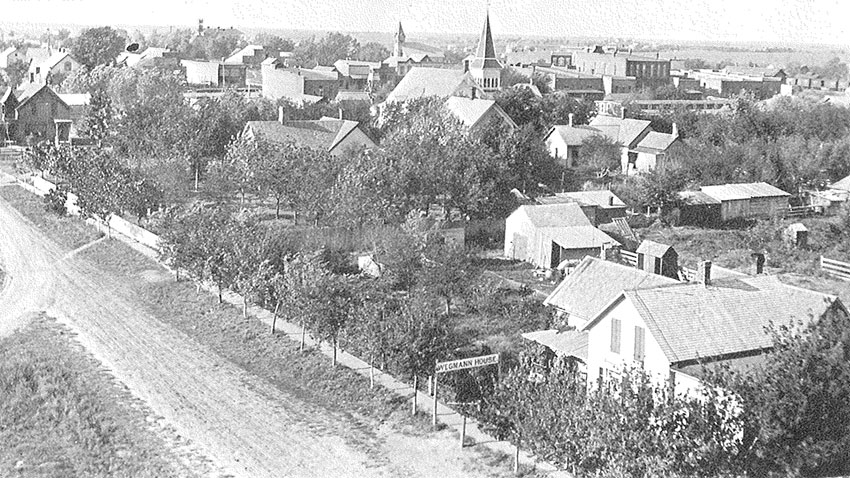Blue Hill is located twenty-two and a half miles north of the Nebraska-Kansas line and 150 miles west of the Missouri River. It is forty miles north and a little east of the geographical center of the United States. The town is along the north border of Webster County and lies between the Republican and Little Blue Rivers.
The town of Blue Hill was considered to be named Belmont, but finding another town in Nebraska by that name, Blue Hill was the name finally selected. The name was derived from its location on the hills of the Blue River. According to Henry Gannett’s work from “The Origin of Certain Place Names in the United States” he states, “The town was so named because of the bluish atmosphere surrounding the hill on which the village is located”.
Blue Hill is one of a number of little plains towns common in Nebraska having sprung up twenty years after the close of the Civil War as crowds of homesteaders pressed westward, some electing to remain and settle here rather than continue the difficult journey. Perseverance, endurance and willingness to withstand hardships were among the characteristics possessed by these early settlers. It seemed their trials only made them kinder to each other, and neighborliness became the outstanding virtue. The first settlers have long since passed on, but many of the family names still are here today carrying on their pioneer ancestors determination.
The town of Blue Hill is at the crossing of the Hastings branch of the Burlington and Missouri River Railroad and the Nebraska and Colorado Railroad. It was surveyed and platted in September 1878, for its original proprietor, Mr. Solomon B. Rohrer, of Hagerstown, MD. After the survey was complete, building commenced immediately. The first train arrived in December of 1878. The Missouri River Railroad soon built a depot and section house. Blue Hill’s distance from large towns, and its fine railroad facilities and the good country surrounding it, rendered its future success.
By early 1882, Blue Hill had grown to be a town of about 1,000 inhabitants, and its business directory indicated a spirit enterprise with substantial commercial importance. However, all this prosperity and growth was interrupted on June 24, 1890, when a most disastrous fire in the business section destroyed all the buildings on the north side of Main (Gage) Street. For the second time in a year this destructive fire was undoubtedly arson as soon after the fire was discovered, the town was found to be on fire in two other locations. These fires were found in time to prevent serious results. The rebuilding of the north side of Gage Street began as soon as the sites were cleared and finances arranged. Many of the new building were constructed of brick and still stand today.



